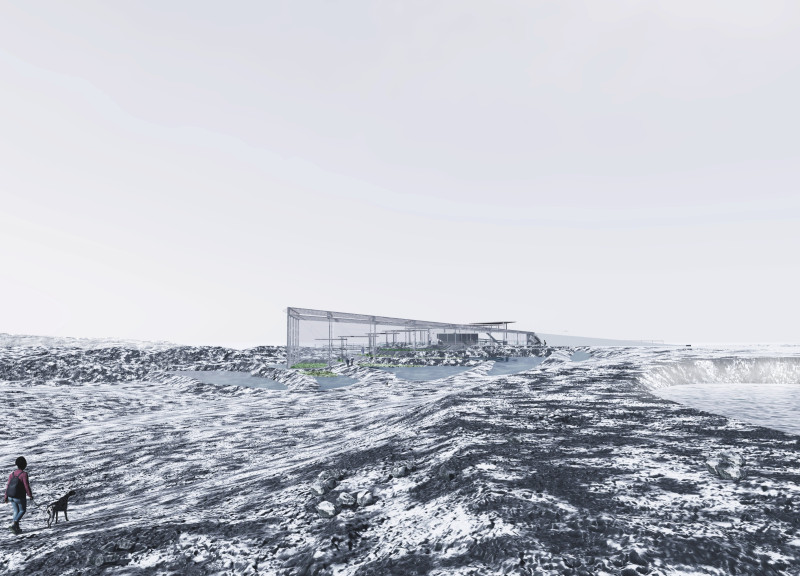5 key facts about this project
The design is situated on a landscape marked by distinct contour lines, featuring two main structures: a stepped greenhouse and a multipurpose space. This setting allows for a clear focus on both functionality and interaction. The concept revolves around utilizing the slope of the land to enhance light for the greenhouse while providing flexible seating in the multipurpose area.
Stepped Greenhouse
The stepped greenhouse is designed to maximize light for plants. Terraces are arranged to prevent shading from surrounding foliage, creating ideal growth conditions. The inclusion of a hydroponic system enhances water efficiency compared to traditional soil gardening. This approach allows seedlings to grow faster and showcases a commitment to sustainable practices in agriculture.
Multipurpose Space
In contrast, the multipurpose space features a stepped floor that follows the natural contour lines of the terrain. This characteristic promotes a range of activities without the limitations of walls. The open layout encourages interaction among users. Variations in elevation create informal seating arrangements, accommodating both children and adults and making the space adaptable for different uses.
Seasonal Adaptability
Seasonal adaptability is a key feature of the design. The outer basin serves as an ice rink in winter, ensuring continued use throughout the year. When the weather is favorable, the hydroponic systems extend to outdoor water gardens, enhancing the overall experience. This aspect of the design considers changes in the environment and ensures the architecture remains functional across seasons.
Structural Considerations
The roof of the greenhouse is tilted to capture sunlight effectively during winter. This design choice improves thermal performance and light exposure for the plants. The external walls are made of ETFE, a lightweight material that minimizes the need for heavy structural supports, reducing shading areas. This selection enhances the efficiency of the greenhouse while maintaining a focus on functionality.
The overall design encourages a connection between the built environment and nature. The interplay of stepped forms and surrounding elements fosters a sense of interaction that engages both plants and people, allowing for meaningful experiences in cultivation and community activities.






















































